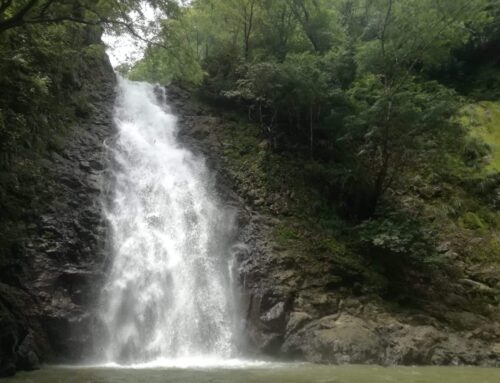Exploring Cabo Blanco Absolute Nature Reserve – Trails & Wildlife
If you’re visiting Santa Teresa or Malpaís and looking for a true eco-adventure, the Cabo Blanco Absolute Nature Reserve is a must-see. Known as Costa Rica’s very first protected reserve, this natural treasure combines lush forests, rich wildlife, and pristine beaches, offering visitors a glimpse of Costa Rica’s unspoiled beauty.
In this guide, we’ll cover everything you need to know about exploring Cabo Blanco, including trails, wildlife, and travel tips.

A Bit of History: The First Protected Reserve
Cabo Blanco Absolute Nature Reserve was established in 1963, making it Costa Rica’s very first nature reserve. The vision was to preserve the incredible biodiversity of the Nicoya Peninsula while setting an example of conservation for future generations. Today, the park protects over 3,000 acres of tropical forest and an additional 4,400 acres of ocean, making it a haven for both land and marine life.
Hiking Trails in Cabo Blanco
Cabo Blanco is known for its hiking trails that cut through dense tropical forest and lead to breathtaking viewpoints and beaches.
Swedish Trail (Sendero Sueco)
-
Length: ~2 km (round-trip)
-
Difficulty: Easy
-
Best For: Families, casual hikers, and birdwatchers.
-
Highlights: A short, accessible trail with opportunities to see monkeys, iguanas, and colorful birds.
Cabo Blanco Trail (Sendero a la Playa Cabo Blanco)
-
Length: ~8 km (round-trip)
-
Difficulty: Moderate to Challenging
-
Best For: Adventure seekers and fit hikers.
-
Highlights: This trail leads through primary forest and ends at Playa Cabo Blanco, a secluded white-sand beach perfect for relaxing after the hike. Along the way, you’ll pass giant trees, streams, and wildlife.
👉 Tip: Bring plenty of water, snacks, and sturdy shoes — this trail takes around 4–5 hours to complete.
Wildlife Encounters
Cabo Blanco is a paradise for wildlife enthusiasts. The reserve is home to:
-
Howler Monkeys & White-Faced Capuchins – Often spotted swinging through the canopy.
-
Coatis & Armadillos – Shy creatures that sometimes cross the trails.
-
Birds – Over 150 species, including trogons, motmots, pelicans, and frigatebirds.
-
Marine Life – The surrounding waters are rich with dolphins, sea turtles, and schools of tropical fish.
For photographers and nature lovers, every step offers a chance to spot something unique.
Visiting Playa Cabo Blanco
The hike to Playa Cabo Blanco is worth every step. This hidden beach is one of the most pristine on the Nicoya Peninsula, with white sands, clear turquoise waters, and a feeling of complete seclusion. It’s an excellent spot to picnic, swim (when conditions are safe), and rest before heading back on the trail.
Practical Information for Visitors
-
Location: Southern tip of the Nicoya Peninsula, about 20–30 minutes from Malpaís and Santa Teresa.
-
Opening Hours: Wednesday to Sunday, 8:00 AM – 4:00 PM (closed Mondays and Tuesdays).
-
Entrance Fee: Around $12 for foreigners, less for residents.
-
What to Bring: Comfortable hiking shoes, insect repellent, sunscreen, plenty of water, and snacks.
-
Guided Tours: Available and highly recommended if you want deeper insights into the ecosystem and history.
Why Cabo Blanco Should Be on Your Itinerary
Cabo Blanco offers a chance to disconnect from the busy surf and nightlife of Santa Teresa and reconnect with nature. Whether you’re hiking, birdwatching, or simply enjoying a quiet day on the beach, this reserve captures the essence of Costa Rica’s “Pura Vida” spirit.
It’s more than just a hike — it’s an experience that combines conservation, adventure, and natural beauty all in one place.
Final Thoughts
If you’re planning a trip to Santa Teresa, Malpaís, or Montezuma, set aside a day to explore Cabo Blanco Absolute Nature Reserve. With its dense forests, diverse wildlife, and stunning beach, it’s a destination that appeals to adventurers, families, and eco-travelers alike.
👉 Ready to explore? Lace up your hiking boots, grab your camera, and get ready to experience one of Costa Rica’s most important natural reserves.






